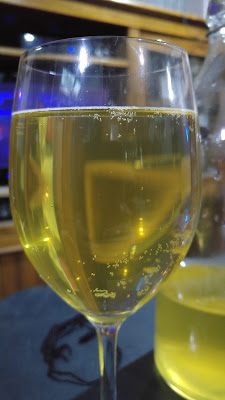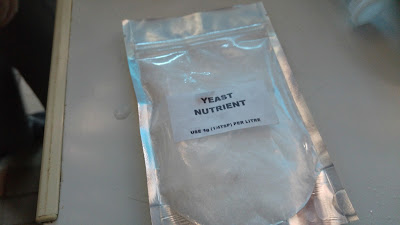 |
| This is Reach; my house cow. She has been gone for many years now, but I still miss her. |
It has been years since I had a house cow...and I still miss her. She was my friend and companion through many misty mornings and rainy afternoons. I have been seeing posts about the cruelty of the dairy industry lately on
Facebook and other
social media and while I agree wholeheartedly that the dairy industry is currently very cruel, I do not agree that we need to totally give up dairy foods (if you are lucky enough to be able to digest them). If you want to continue to eat dairy food but want to avoid the cruelty associated with it you have several options;
(Option A) If you have a few acres and an hour or so a day to spare, you can get your own cow (or goat, sheep or other lactating mammal) and have cruelty free milk, learn to make cheese and yogurt and enjoy the company of a truly amazing friend.
(Option B) Go dairy free...this is fairly easy, unless you are an avid cheese fan. I use plant milks a lot these days as I like the flavours and I have several friends who are vegan so having them on hand makes catering easier. There are dairy free cheeses and yogurts etc available too.
(Option C) See if you can source cruelty free dairy products in your local area. There are a few places which produce milk without taking the calves away from the mother or using other cruel practices such as artificial insemination or de-horning. Check out this
Krishna dairy...
 |
| I unfortunately can't find my stash of photos showing my dairy cows. The cow in this photo was one I milked for a few years; her name was Beauty. |
Many years ago I wrote an article for Grass Roots magazine about how to keep a happy house cow, I thought I would reproduce it here for your reference (just in case you want to try out option A). I have added a glossary at the bottom for those unfamiliar with farming jargon.
Bovine Motherhood
Keeping a milking cow is one of the most satisfying experiences in life in my humble opinion. Not only do they supply milk and keep the grass down, they also supply meat, in the form of calves, manure, food for guinea fowl (mine parade around a seated cow picking off ticks and lice), companionship and endless amusement.
Management of house cows is a tricky, much discussed subject (like climate change or the best way to peg out jeans) but surprisingly easy. All you need to do is keep in mind the needs of your cow. By needs I mean the emotional or psychological needs rather than physical. There have been many wonderful books and articles written on the physical needs of cattle already; Keeping a house cow by Jim Wilson is one of my favorites.
Cows are motherly creatures; they live to fuss over a new calf, so don't deprive them of it. When your cow calves leave them alone for a week. This gives them the chance to get to know each other and gives the colostrum a chance to clear. Then bring them both in, she might be a bit reluctant to share her baby at first, food will help though. If your cow has been handled quietly and calmly she will eventually allow you to handle her calf too.
Most cows will have more than enough milk for you and the calf. Sometimes you can milk the cow while the calf runs around you both, I usually do this for the first two weeks, I just take out my bucket, stool and some hay, plonk them down by the cow and away I go. As the calf gets older you will have to lock it up for part of each day.
I have found that locking the calf up in the morning and milking in the afternoon works for me, but the other way around will work too, it just depends on whether you are a night owl or a morning person. Either way allow room for the calf to run and play and pasture for grazing in the calf pen. I leave our calf in the mesh lined cow paddock beside the house and turn the cow out to the larger part of the property to graze, that way I can keep an eye on the little...darling. I run a daycare center for my cows; they go off to graze while I watch the kids. Cattle in herds do this naturally, one or two cows can often be seen minding a mob of calves, sometimes an old bull will fill in too, while the mothers graze over the hill. Older daughters will help look after calves too, if you keep a heifer calf off your cow, she will take on some of the care of future calves.
While you milk, talk or sing to your cow. This may sound silly, but I've found it really does help to calm them, especially singing nursery rhythms. Maybe they are too busy giggling to worry about you playing with their udder, the rest of the family certainly are. Always remember to leave some milk for the calf after you milk, sucking of teats by the calf after you milk prevents mastitis and stimulates greater milk production.
It also helps to have two cows in calf six months apart, so you can leave the cow to feed her calf at six months and still milk the other one. When your second cow is ready to milk you can simply swap them over, it is simplest to have them all running together. There is no need to fuss over weaning, most cows will wean their calves themselves about a month before they calve again, of course there is always the exception to the rule. Some cows like to keep their calves tied to their apron strings by feeding them into adulthood (they are so human) you may have to intervene here.
It seems to be a common misconception that you need to get 10-15 litres a day from your cow. Unless you have a huge family, or make cheese every day, you don't need that much, just take what you need. Cows will regulate their milk production to meet the demand, so the more you take the more she makes, but you will have to feed her more to keep her in good shape while she does it.
Using this method you can go away for a holiday or skip days, just leave the calf with the cow while you are away. I have left my cow out for a month, bought her back in and milked four litres off her the first day. Mostly the yield will drop, but it can be built back up within a few days with extra feeding and regular milking.
Cows also need company, of the bovine kind if possible. If you only have room for one cow and have no cow keeping neighbors, then maybe a goat would fit. Cows will make friends with almost anything and a goat is a good substitute as you can milk her while your cow is dried off. If the old girl is quiet you can go out and sit near her. Cows give off such a calm vibe they can soothe a troubled mind almost instantly. She will come to regard you as a kind of honorary calf, and as such as part of the herd.
This method probably sounds a bit erratic, but I assure you it has worked for me for eight years now. I have had no mastitis, fat calves and both I and my cows are happy. So good luck keeping a house cow, just remember; it's fun.
Glossary
Calves- Calving refers to the process of giving birth for a cow. Also the plural of calf.
Colostrum- Colostrum is the substances all mammals produce immediately after giving birth which conveys immunity to disease and concentrated sugars, minerals and vitamins to the young. If calves don't get colostrum they will be thin, sickly and not unlike famine victims for their entire life.
Bring them both in- A phrase meaning to bring the animals closer to the main base of operations in order to handle them. Not related to spy craft in any way.
Heifer- A juvenile female bovine, or a teenage cow. Often seen to be overly concerned with grooming and the activities of the bull in the next paddock.
Mastitis- A
bacterial infection in the udder, causing pain, swelling, pus and general crankiness in the cow and any other mammal unlucky enough to suffer from it.
In calf- Sort of like 'with child'. Farmers refer to a cow as being 'in calf' when she is pregnant, even though the calf is in her.
Weaning- When the calf is persuaded it doesn't need to feed from the mother any more. Usually cows will begin to wean their babies by moving away when they try to feed, if the calf doesn't get the hint she may try gently butting her calf with her head when they try to feed. If the calf is particularly persistent (or dim witted) she may kick him/her in the head every time they try to feed. If nothing else works I have seen cows outright attack their teen offspring to get the idea across.









































